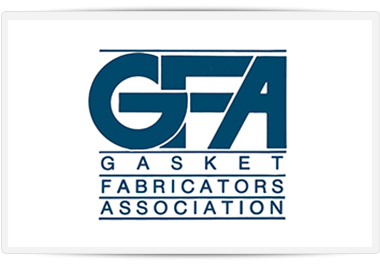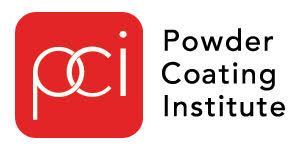Cork Material Guide: Properties, Types & Applications
Frank Lowe offers die cut composition cork & a range of different cork-n-rubber materials with or without adhesives. Read more about Frank Lowe's custom cork.
At Frank Lowe, we specialize in providing precise, die cut cork components, cork sheets, and cork rolls. Whether you're looking for cork for consumer products or cork for more industrial applications, the expert team at Frank Lowe can help.
Request a free quote and sample of this product
We are proud to be one of the leading providers of cork material derived from the cork oak tree. During cork production, the renewable bark of the cork oak tree is harvested from cork forests and processed into the cork material that can be used for natural cork stoppers, wine bottle stoppers, cork coaster baking, and more.
Because our customers have a vast range of unique needs, we offer two major categories of cork material:
- Composition cork material
- Cork-n-rubber material
We offer sheets and/or rolls of cork granules that can be die cut into virtually any shape or form based on your application.
As leaders within the cork industry, we specialize in custom manufacturing solutions with this fire retardant, eco-friendly material. And regardless of the size or volume of your order, Frank Lowe will Get You What You Need When You Need It.
Let's take a closer look at natural cork material and cork-n-rubber material.
Benefits and Properties of Cork Material
To truly understand the properties and benefits of cork material, we must examine the composition of cork and cork-n-rubber differently.
Benefits and Properties of Composition Cork
Composition cork is a stable, lightweight substance created from hydrophobic materials to help reduce water penetration. In addition to water resistance, some of the most common qualities and benefits of composition cork include:
- Unaffected by temperature extremes
- Fire retardant qualities
- Exceptionally compressible and low density
- Excellent insulation
- Low thermal conductivity
- Resistant to sound and seepage
- Lightweight, water-resistant, and buoyant
- Virtually indestructible
Benefits and Properties of Cork-n-Rubber Materials
Cork-n-rubber materials are a combo of granulated cork and synthetic rubber. This excellent material boasts the high resilience of rubber and the compressibility of cork. Some of the most common qualities of cork-n-rubber include:
- Good resistance to solvents, fuel, and oil
- Resistance to fluid penetration
- Effective for low bolt load application
- High flexibility and compressibility
- Moderately resistant to fungus, acid, and weathering
- Wide range of fluid compatibility
- Ability to reduce levels of transmitted vibration and provide acoustic insulation
Applications and Uses of Cork
Composition cork and cork-n-rubber materials offer a full range of uses across industries and markets.
Applications and Uses of Composition Cork
Composition cork is typically used in decorative items and as a protective backing on novelty items on cork coasters, trivets, cork stoppers, wine stoppers, cork presents, cork leather, cork placemats, and more. A few of the most common applications for composition cork and cork granules include:
- Bulletin boards
- Ruler backing
- Protective padding
- Cork stoppers
- Wine bottle stoppers
- Other applications that require an air-tight solution
- Shoe soles
- Flooring materials
- Glass separation pads
- Adhesive-backed bumpers and spacers
- Cap liners
- Fabric-like sheets
- Trivet backing
- And more
Applications and Uses of Cork-n-Rubber
Cork-n-rubber combines the flexibility and shelf life of rubber with the compressibility and recovery characteristics of cork. As a result, cork-n-rubber is a high-demand material for a seemingly endless array of applications and industries. Some of the most common cork-n-rubber applications include:
- Spacers and bumpers
- Protective tapes
- Gaskets
- Stripping tapes
- Insulation and air cushioning
- Cork flooring underlayment
- Construction
- And more
Different Types of Cork-n-Rubber Materials
The custom manufacturing experts at Frank Lowe will work closely with you to guide you to the best cork products for your application. While we provide a range of different grades of composition cork based on your specific application, we also offer different blends of cork-n-rubber materials as well as different densities.
Cork-n-Neoprene Materials
This blend of cork-n-rubber boasts an amazing resistance to oil and heat combined with tensile resistance and a high level of tear protection. Cork-n-Neoprene material is regularly used in the construction of air compressors and refrigeration devices.
Cork-n-Nitrile Materials
The Cork-n-Nitrile blend delivers a remarkable level of oil resistance, which makes it an in-demand material for meter applications, fuel pump manufacturing, and the automotive industry.
Cork-n-Synthetic Rubber Material
Cork-n-Synthetic rubber is highlighted by excellent resistance to oils and environmental elements. This cork-n-rubber blend is typically used in natural gas meters, sealing applications, and the automotive industry. You can also find this material in valve covers, valve gaskets, oil pans, and transmission pans.
Cork-n-SBR Sponge Material
The cork-n-SBR sponge material boasts a high level of compressibility, which is why it's typically used in matting, cushioning, noise reduction, fatigue, and die ejection. Cork-n-SBR sponge materials are also used under equipment and furniture in compression mats.
Cork & Silicone
Cork-n-silicone materials will provide a moderately high level of fluid resistance. It can also be very efficient in applications with either extremely high or extremely low temperatures of operation.
Custom Manufacturing with Die Cut Cork Products
Frank Lowe is one of the leading providers of die cut cork products and components. We offer a full catalog of different composition cork materials and cork-n-rubber materials. After gaining an understanding of your application, we will guide you to the best density of cork products.
Choose Cork on Sheets or a Roll
You can elect to have your cork products supplied on a roll, in sheets, on slit rolls, or custom die-cut to your exact specifications.
Regardless of how you need your cork material, we always offer to add a pressure-sensitive adhesive to the back that bonds to a range of different surfaces.
Simply put, we are your full-service custom manufacturing team that offers a complete suite of services to move your project from conception through to completion.
Why Is Natural Cork an Eco-Friendly, Sustainable Material?
Cork is essentially the outermost bark of cork trees. In fact, when harvesting cork, only the bark, which is a thin layer, is utilized to obtain cork. There are two species of cork oaks that produce cork.
Each cork tree grows in the Iberian region and Mediterranean region. The bark of the cork tree is harvested when the tree reaches 20 or 25 years old.
Afterward, the bark is harvested about every nine years, which makes cork a very sustainable material. Even the harvesting process of cork is done so in a manner to avoid causing harm to the cork oak trees.
How Is Natural Cork Material Made?
As we previously mentioned, the cork layer is a byproduct of the bark on cork oak trees. To produce cork, a harvester cuts through the cork layer on the trunk of the cork oak tree. Because it's a sustainable material, the harvester avoids cutting too deep to damage the living portion of the cork oak.
Usually, horizontal cuts are made at the base of cork trees. Then, the harvester strips the cork material from each panel of the cork oak tree. After the cork is harvested from the cork tree, the cork planks are usually placed on concrete during the drying process to avoid contamination.
Afterward, the natural material is turned into cork stoppers, glass bottles, luggage tags, cork for musical instruments, bottle stoppers, wine corks, and a host of other types of cork products.
Learn More About Cork
See Our Cork Products
Contact Frank Lowe for Different Types of Cork Material
At Frank Lowe, we don't just sell die-cut composition cork and cork-n-rubber products — we help you create better products in a more efficient manner.
We'll get to know your unique application needs and then guide you to the most ideal solution — whether it's die-cut cork or any other elastomer we offer. And we offer fast order fulfillment backed by even faster shipment. Simply put, we will Get You What You Need When You Need It.
Request a free quote and sample of this product





